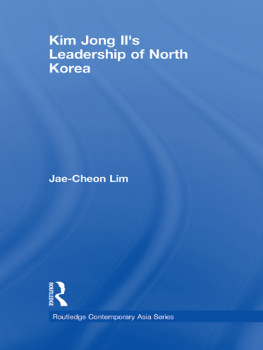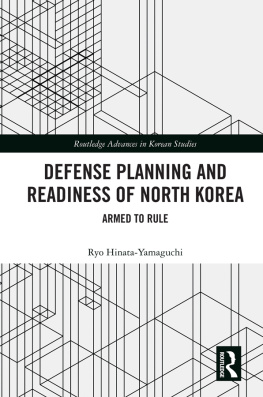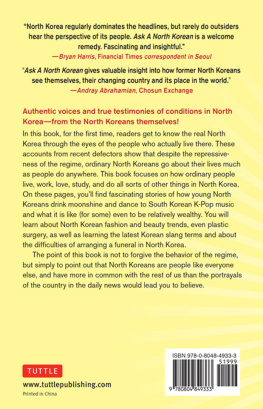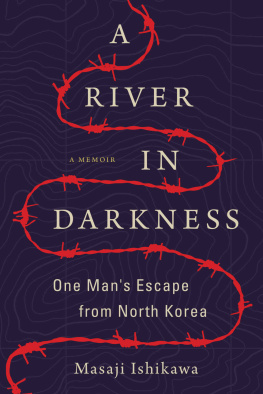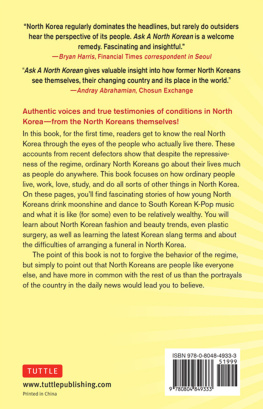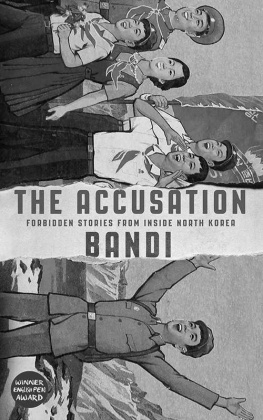
The author and publisher have provided this e-book to you for your personal use only. You may not make this e-book publicly available in any way. Copyright infringement is against the law. If you believe the copy of this e-book you are reading infringes on the authors copyright, please notify the publisher at: us.macmillanusa.com/piracy.
In memory of
ALICE TYSON BOYNTON
(19302013)
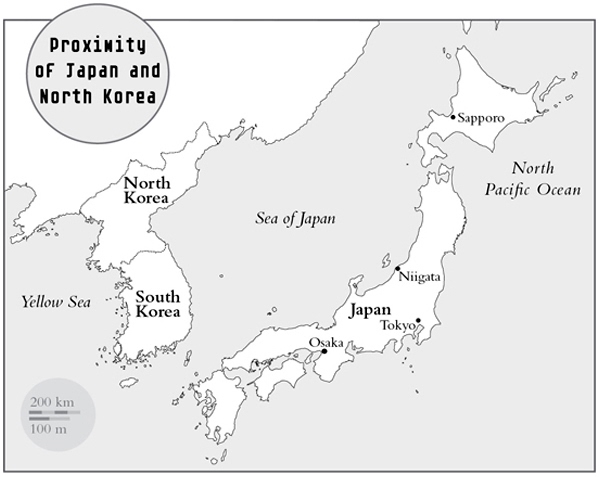
Note: Japanese names are rendered first name/last name. Korean names are rendered last name/first name.
SHINZO ABE Japanese prime minister from 2006 to 2007, 2012 to present
KAZUHIRO ARAKI chairman of the Investigation Commission on Missing Japanese Probably Related to North Korea
KAYOKO ARIMOTO mother of Keiko Arimoto
KEIKO ARIMOTO abducted in 1983 while studying English in London
FUKIE (NE HAMAMOTO) CHIMURA abducted from Obama, Japan, in 1978
YASUSHI CHIMURA abducted from Obama, Japan, in 1978
CHOI EUN-HEE South Korean actress and former wife of Shin Sang-ok, abducted from Hong Kong in 1978
KENJI FUJIMOTO sushi chef who worked for Kim Jong-il, 19882001
TAKAKO FUKUI girlfriend of Japanese Red Army Faction member Takahiro Konishi
TADAAKI HARA chef abducted from Osaka, Japan, in 1980
KAORU HASUIKE abducted from Kashiwazaki, Japan, in 1978
KATSUYA HASUIKE daughter of Kaoru and Yukiko Hasuike
SHIGEYO HASUIKE son of Kaoru and Yukiko Hasuike
TORU HASUIKE older brother of Kaoru Hasuike
YUKIKO HASUIKE (NE OKUDO) abducted from Kashiwazaki, Japan, in 1978
KENJI ISHIDAKA TV Asahi producer, author of Kim Jong-ils Abduction Command
TORU ISHIOKA Japanese student abducted from Barcelona in 1980
BRINDA JENKINS daughter of Charles Robert Jenkins and Hitomi Soga
CHARLES ROBERT JENKINS U.S. Army sergeant, defected to North Korea in 1965, married abductee Hitomi Soga in 1980
MIKA JENKINS daughter of Charles Robert Jenkins and Hitomi Soga
KIM EUN-GYONG daughter of Megumi Yokota and Kim Yong-nam
KIM HYON-HUI North Korean agent who bombed Korean Air Flight 858 in 1987
KIM IL-SUNG founder and leader of North Korea from 1948 to 1994
KIM JONG-IL leader of North Korea from 1994 to 2011
KIM YOUNG-NAM South Korean abducted in 1978, married Megumi Yokota in 1986
JUNICHIRO KOIZUMI prime minister of Japan from 2001 to 2006
HARUNORI KOJIMA abductee activist
TAKAHIRO KONISHI Japanese Red Army Faction member
EDWARD S. MORSE American zoologist (18381925)
HIROKO SAITO emigrated from Japan to North Korea, 1963
KATSUMI SATO director, Modern Korea Institute, abductee activist (19292013)
YASUHIRO SHIBATA Japanese Red Army Faction member
SHIN KWANG-SOO North Korean secret agent
SHIN SANG-OK South Korean film director, ex-husband of Choi Eun-hee, abducted from Hong Kong in 1978
HITOMI SOGA abducted from Sado Island, Japan, 1978
MIYOSHI SOGA abducted with her daughter, Hitomi, from Sado Island, Japan, 1978
TAKAMARO TAMIYA leader of the Red Army Faction (19431995)
HITOSHI TANAKA senior Japanese diplomat
TAKESHI TERAKOSHI abducted from Shikamachi in 1963; currently lives in Pyongyang, North Korea
TOMOE TERAKOSHI mother of Takeshi Terakoshi
RYUZO TORII professor of anthropology, Tokyo University (18701953)
SHOGORO TSUBOI professor of anthropology, Tokyo University (18631913)
MEGUMI YAO wife of Yasuhiro Shibata
MEGUMI YOKOTA thirteen-year-old schoolgirl abducted from Niigata, Japan, in 1977
SAKIE YOKOTA mother of Megumi Yokota
SHIGERU YOKOTA father of Megumi Yokota
People began disappearing from Japans coastal towns and cities in the fall of 1977. A security guard vacationing at a seaside resort two hundred miles northwest of Tokyo vanished in mid-September. In November, a thirteen-year-old girl walking home from badminton practice in the port town of Niigata was last seen eight hundred feet from her familys front door. The next July two young couples, both on dates, though in different towns on Japans northwest coast, disappeared. One couple left behind the car theyd driven to a local make-out spot; the other abandoned the bicycles theyd ridden to the beach.
What few knew at the time was that these people were abducted by an elite unit of North Korean commandos. Japanese were not the only victims, and dozens also disappeared from other parts of Asia, Eastern Europe, and the Middle East during the same period. In May 1978 a Thai woman living in Macau was grabbed on her way to a beauty salon. In July 1978 four Lebanese women were taken from Beirut; later that year, a Romanian artist disappeared, having been promised an exhibition in Asia. Some were lured onto airplanes by the prospect of jobs abroad; others were simply gagged, thrown into bags, and transported by boat to North Korea. Their families spent years searching for the missing, checking mortuaries, hiring private detectives and soothsayers. Only five were ever seen again.
Because the locations they were taken from were dispersed, and their numbers relatively small, almost nobody in Japan drew a connection among the incidents. A local paper slyly described one couple as having been burned up by their passion, the implication being that they had eloped after the woman became pregnant. Rumors about the disappearances surfaced periodically, but newspapers reported them as urban myths, akin to alien abductions. When the families of the missing went to the police, they were told that with no evidence of foul play, there was nothing to investigate. After all, thousands of people disappear from Japan every year, the police explained, dying lonely deaths or fleeing drugs, debts, or unhappy relationships. While some members of the Japanese government and police force became aware of the abductions, they avoided acknowledging them officially, which would have required them to take action. And what, after all, could be done? Japan had neither diplomatic relations with North Korea nor a military that could take unilateral action, and its mutual security treaty with the United States wouldnt be triggered by a handful of kidnappings. And what if a Japanese official raised the issue and North Korea hid the evidence by killing the abductees? It cant be helped ( Shikata ga nai ) is the phrase the Japanese commonly use to rationalize inaction. So, for the next quarter century, dozens of abductees were fated to languish in North Korea.
On the evening of July 13, 1978, Kaoru Hasuike and his girlfriend, Yukiko Okudo, rode bikes to the summer fireworks festival at the Kashiwazaki town beach. The cool night air felt good against their skin as they whisked down the winding lanes of the coastal farming village 140 miles north of Tokyo. They parked their bikes by the public library and made
With his fashionably shaggy hair and ready smile, the twenty-year-old Kaoru Hasuike impressed those who met him as a young man who was going places. Like much of his generation in Japan, he wasnt interested in politics and knew almost nothing about Korea, North or South. Cocky and intelligent, he was at the top of his class at Tokyos prestigious Chuo University. Yukiko, twenty-two, the daughter of a local rice farmer, was a beautician for Kanebo, one of Japans leading cosmetics companies. She and Kaoru had been dating for a year, and he planned to propose once he finished his law degree. Japans economy was surging ahead, and the future looked bright. Hed get a job at a corporation; theyd move from Kashiwazaki to Tokyo and build a life together. That was the plan, anyway.
Next page


